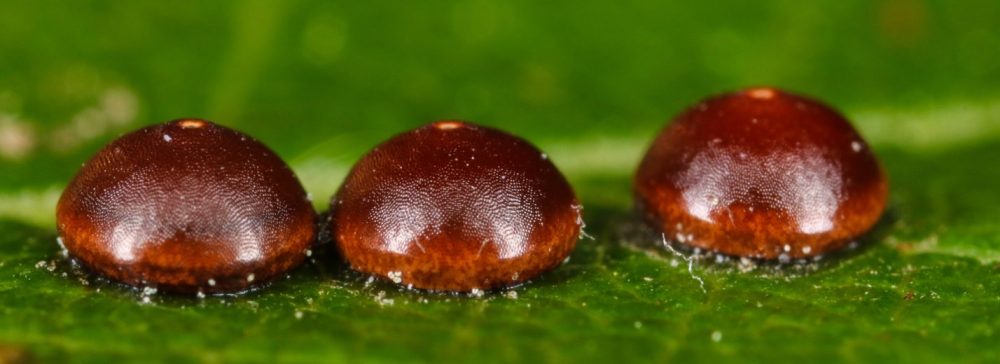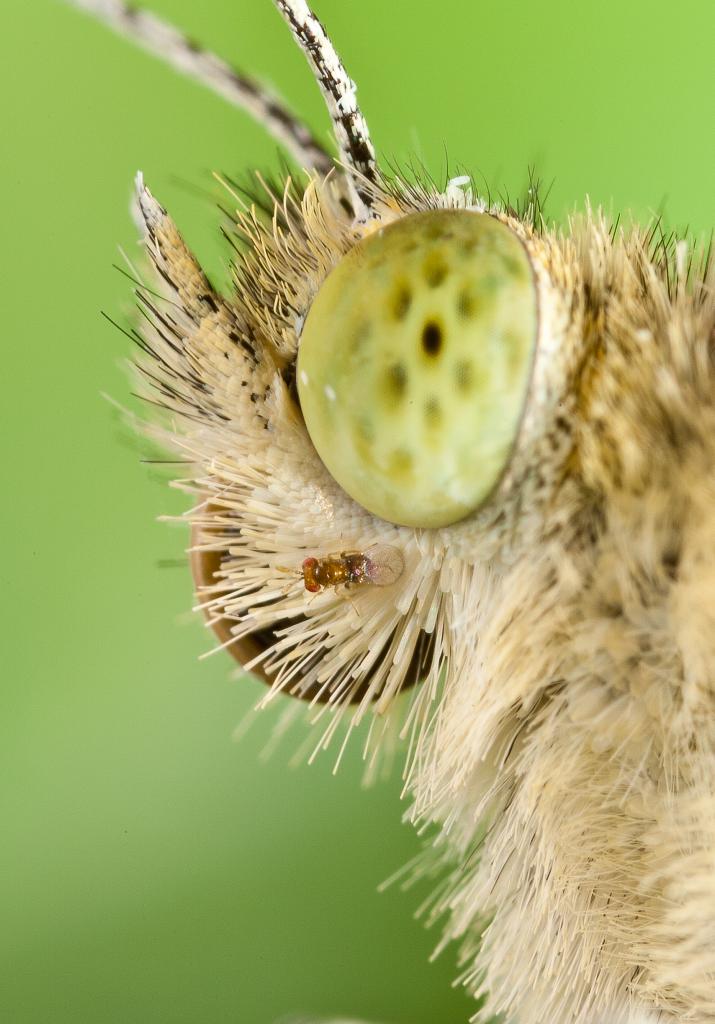Natural selection of butterfly anti-sex pheromones by hitchhiking wasps
Many insects possess a sexual communication system that is vulnerable to chemical espionage by parasitic wasps. We discovered that hitch-hiking Trichogramma egg parasitoids can exploit the antiaphrodisiac (AA) pheromones emitted by butterflies (see animation below). These pheromones are passed from male butterflies to females during mating to render them less attractive to conspecific males. They are known from butterflies from the families Pieridae and Nymphalidae (Heliconiini). When a tiny Trichogramma wasp detects the AA, it rides on a mated female butterfly to a host plant and then parasitizes her freshly laid eggs. To study the question about the evolution of AAs and possible pheromone application in biocontrol, I recently received funding from NWO (ENW M1 Open round). PhD student Liana Greenberg aims to understand how selection by egg parasitoids has contributed to the evolution of AAs in butterflies. Next to understanding the pheromone evolution, Liana will also work on the use of AAs in biocontrol as so-called ‘allelochemicals-based tactics’. She will create selections lines of Trichogramma wasps that are good or less good in detecting AAs and release those lines in a cabbage field. The second part of this project is also supported by the Dutch biocontrol company Koppert.
Buttterfly males transfer AAs to females during mating which renders them less attractive to other males. Minute egg parasitoid wasps like Trichogramma can exploit the AA smell of mated female butterflies, climb onto them probably during flower visits and hitch a ride to oviposition sites. Once the butterfly female has laid her eggs, the wasp descents and parasitizes the freshly laid egg. After a few days, new wasps emerge instead of a caterpillar. This animation was made by Jade Kandelaar, MSc student at WUR who did a capita selecta with Liana Greenberg.
-
Recent Posts
- Dr. Bassetti, congrats – you made it! October 7, 2022
- New publication by Corne van der Linden in Biological Control March 31, 2022
- First thesis chapter published by Niccolo Bassetti in BMC Plant Biology! March 31, 2022
- Yes, finally, Eddie Griese obtained his PhD degree! October 6, 2021

